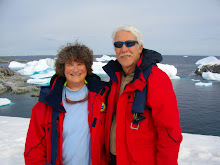Suffering due to Rachel Carson's bad science
John Tierney now does science writing for the New York Times. This week he takes a look at the huge damage done 50 years ago by Rachel Carson and her Silent Spring.
Fateful Voice of a Generation Still Drowns Out Real Science
For Rachel Carson admirers, it has not been a silent spring. They’ve been celebrating the centennial of her birthday with paeans to her saintliness. A new generation is reading her book in school — and mostly learning the wrong lesson from it.If students are going to read “Silent Spring” in science classes, I wish it were paired with another work from that same year, 1962, titled “Chemicals and Pests.” It was a review of “Silent Spring” in the journal Science written by I. L. Baldwin, a professor of agricultural bacteriology at the University of Wisconsin.
He didn’t have Ms. Carson’s literary flair, but his science has held up much better. He didn’t make Ms. Carson’s fundamental mistake, which is evident in the opening sentence of her book:
“There was once a town in the heart of America where all life seemed to live in harmony with its surroundings,” she wrote, extolling the peace that had reigned “since the first settlers raised their houses.” Lately, though, a “strange blight” had cast an “evil spell” that killed the flora and fauna, sickened humans and “silenced the rebirth of new life.”
This “Fable for Tomorrow,” as she called it, set the tone for the hodgepodge of science and junk science in the rest of the book. Nature was good; traditional agriculture was all right; modern pesticides were an unprecedented evil. It was a Disneyfied version of Eden.
Ms. Carson used dubious statistics and anecdotes (like the improbable story of a woman who instantly developed cancer after spraying her basement with DDT) to warn of a cancer epidemic that never came to pass. She rightly noted threats to some birds, like eagles and other raptors, but she wildly imagined a mass “biocide.” She warned that one of the most common American birds, the robin, was “on the verge of extinction” — an especially odd claim given the large numbers of robins recorded in Audubon bird counts before her book.
Ms. Carson’s many defenders, ecologists as well as other scientists, often excuse her errors by pointing to the primitive state of environmental and cancer research in her day. They argue that she got the big picture right: without her passion and pioneering work, people wouldn’t have recognized the perils of pesticides. But those arguments are hard to square with Dr. Baldwin’s review....
Further Reading
"Chemicals and Pests." I.L. Baldwin. Science, Sept. 28, 1962.
"Courage for the Earth: Writers, Scientists and Activists Celebrate the Writings of Rachel Carson." Edited by Peter Matthiessen. Houghton Mifflin, 2007.
"Suffering in Silence." Katherine Mangu-Ward. Wall Street Journal, April 20, 2007.
"Eco-Freaks." John Berlau. Nelson Current, 2006.
"What A Book Can Do: The Publication and Reception of Silent Spring." Priscilla Coit Murphy. University of Massachusetts Press, 2005
"What the World Needs Now Is DDT." Tina Rosenberg. New York Times Magazine, April 11, 2004.
"Silent Spring at 40." Ronald Bailey. Reason, June 12, 2002.
"Carcinogens and Anticarcinogens in the Human Diet." National Academy of Sciences, 1996.
"A Moment on the Earth." Gregg Easterbrook. Penguin, 1995.
"100 things you should know about DDT." J. Gordon Edwards and Steven Milloy. JunkScience.com.


1 Comments:
Hmm.. I've thought about this very much..... It does lead to other issues...
frokostordning
Post a Comment
<< Home